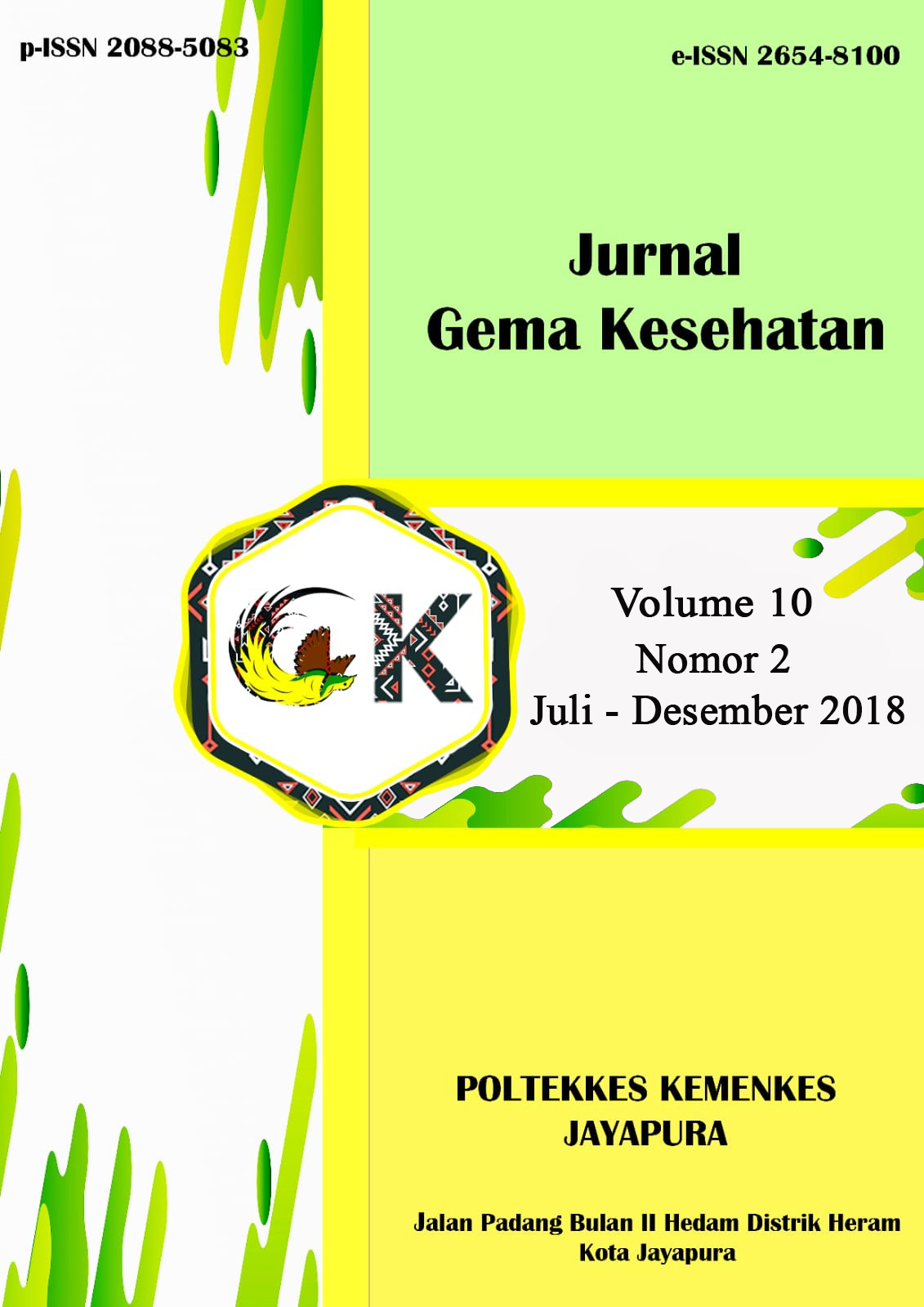DETEKSI DINI CEREBRAL PALSY PADA BAYI SEBAGAI UPAYA PENCEGAHAN KETERLAMBATAN DALAM DIAGNOSIS
Abstract
Cerebral palsy merupakan gangguan pertumbuhan motorik dan postur tubuh yang bersifat permanen dan tidak dapat disembuhkan, namun untuk perbaikan fungsi pada cerebral palsy masih dapat dilakukan. Cerebral palsy sering terjadi pada masa perkembangan anak. Insidensi dari cerebral palsy di tiap negara umumnya antara 1,5 sampai 2,5 dari 1000 kelahiran hidup. Penyebab terjadinya cerebral palsy bersifat multifaktor, terbagi dalam tiga periode, yaitu periode prenatal, perinatal, dan postnatal. Klasifikasi cerebral palsy terbagi berdasarkan regio anatomi tubuh yang terkena, secara fisiologis, dan fungsional. Cerebral palsy harus dilakukan diagnosis sejak dini. Tujuannya untuk mengenali kondisi anak agar dapat menentukan terapi yang tepat dalam perbaikan fungsi motorik dan postur tubuh dan mencegah keterlambatan dalam diagnosis. Diagnosis dini dapat dilakukan sejak bayi berusia kurang dari 6 bulan, dimana bayi sudah menunjukkan tanda-tanda gangguan perkembangan motorik dan melihat riwayat penyakit disertai pemeriksaan penunjang berupa pemeriksaan radiologi dengan MRI.Downloads
References
Adogu P, Ubajaka C, Egenti N, et al. (2015). Evaluation of risk factors of cerebral palsy in a tertiary health facility, Nnewi, Nigeria: a case-control study. International Journal Medicine Science Public Health. 5(2): p. 109.
Allen PJ, Vessey JA, Schapiro NA. (2010). Primary Care Of The Child With A Chronic Condition. Fifth Edition. Missouri: Mosby Elsevier.
American Academy of Pediatrics. (2013). Cerebral Palsy. http://www.healthychildren.org/English/health-issues/conditions/developmental-disabilities/Pages/Cerebral-Palsy.aspx. Diakses 14 Agustus 2019.
Azar F, Beaty JH, Canale ST. (2017). Campbell’s Operatibe Orthopaedics. Thirteen Edition. Philadelphia: Elsevier.
Center for Disease Control and Prevention (CDC). (2018). Cerebral Palsy USA. https://www.cdc.gov/ncbddd/cp/facts.html. Diakses 14 Agustus 2019.
Delobel-Ayoub M, Klapouszczak D, Maria M, et al. (2017). Prevalence and characteristics of autism spectrum disorders in children with cerebral palsy. Dev Medical Child Neurology. 59(1): pp. 738–742
Faezal F. (2016). Penelitian Cerebral Palsy Indonesia. http://www.cerebralpalsyindonesia.com/penelitian-cerebral-palsy-indonesia/. Diakses 14 Agustus 2019.
Hadders-Algra M. (2014). Early diagnosis and early intervention in cerebral palsy. Front Neurology. 5(4): pp. 1–13
Handryastuti S, Fadiana G, Ismael S, et al. (2018). Early detection of cerebral palsy in high-risk infants: diagnostic value of primitive and developmental reflexes as well as ultrasound. Pediatrics Indonesia. 58(2): pp. 5–12
Kementerian Kesehatan RI. (2014). INFODATIN Pusat Data dan Informasi Kemeterian Kesehatan RI Penyandang Disabilitas Pada Anak. Jakarta: Kementrian Kesehatan RI
Kogan MD, Yeargin-Allsopp M, Schieve LA, et al. (2016). Prevalence of cerebral palsy and intellectual disability among children identified in two U.S. National Surveys, 2011–2013. Ann Epidemiology. 26(3): pp. 222–226.
Krigger KW. (2016). Cerebral Palsy : An Overview. American Family Physician. 73(2): pp. 91–100.
Millichap JG. (2016). Early Detection of Cerebral Palsy. Pediatrics Neurology Briefs. 10(1): p. 85.
Noritz G, Murphy NA. (2013). Clinical report Motor Delays: Early Identification and Evaluation. Pediatrics. 131(1): pp. 2016–2027.
Novak I, Morgan C, Adde L, et al. (2017). Early, accurate diagnosis and early intervention in cerebral palsy: Advances in diagnosis and treatment. JAMA Pediatrics. 171(1): pp. 897–907.
Novak I. (2014). Based Diagnosis, Health Care, and Rehabilitation for Children With Cerebral Palsy. Journal Child Neurology. 29(1):pp. 52-62.
Pattar R, Yelamali BC. (2015). Clinical Spectrum and Risk Factors of Cerebral Palsy in Children. Medica Innovation. 4(1): pp. 6–9.
Richards CL, Malouin F. (2013). Cerebral palsy An Information Guide for Parents and Families 4th edition. Melbourne: The Royal Children’s Hospital. Epub ahead of print.
Ropper AH, Samuels MA, Klein JP. (2014). Adams and Victor’s: Principles of Neurology. Tenth Edition. US: McGraw-Hill Education.
Rosenbaum P, Bartlett; Livingston.(2018). Management Of Cerebral Palsy In Children: A Guide For Allied Health Professionals Summary The Management of Cerebral Palsy in Children-A Guide for Allied Health Professionals Policy manual Patient Matters Manual for Public Health Organisations. North Sidney: NSW Ministry of Health.
Sankar, Chitra., Mundkur, Nandini. (2015). Cerebral palsy-definition, classification, etiology and early diagnosis. Indian Journal Pediatry. 72(2): pp. 865–868.
Stavsky M, Mor O, Mastrolia SA, et al. (2017). Cerebral Palsy—Trends in Epidemiology and Recent Development in Prenatal Mechanisms of Disease, Treatment, and Prevention. Front Pediatry. 5(2): pp. 1–10.
Swaiman KF, Ashwal S, Ferreiro DM, et al. (2018). Swaiman’s Pediatric Neurology: Principles and Practice. Sixth Edition. Edinburg: Elsevier.
Van Naarden Braun K, Doernberg N, Schieve L, et al. (2016). Birth prevalence of cerebral palsy: A population-based study. Pediatrics 137. Epub ahead of print.
Published
How to Cite
Issue
Section
Copyright Notice Authors who publish with Gema Kesehatan (GK) agree to the following terms: Authors retain copyright and grant Gema Kesehatan (GK) right of first publication with the work simultaneously licensed under a Creative Commons Attribution License CC-BY-SA



















